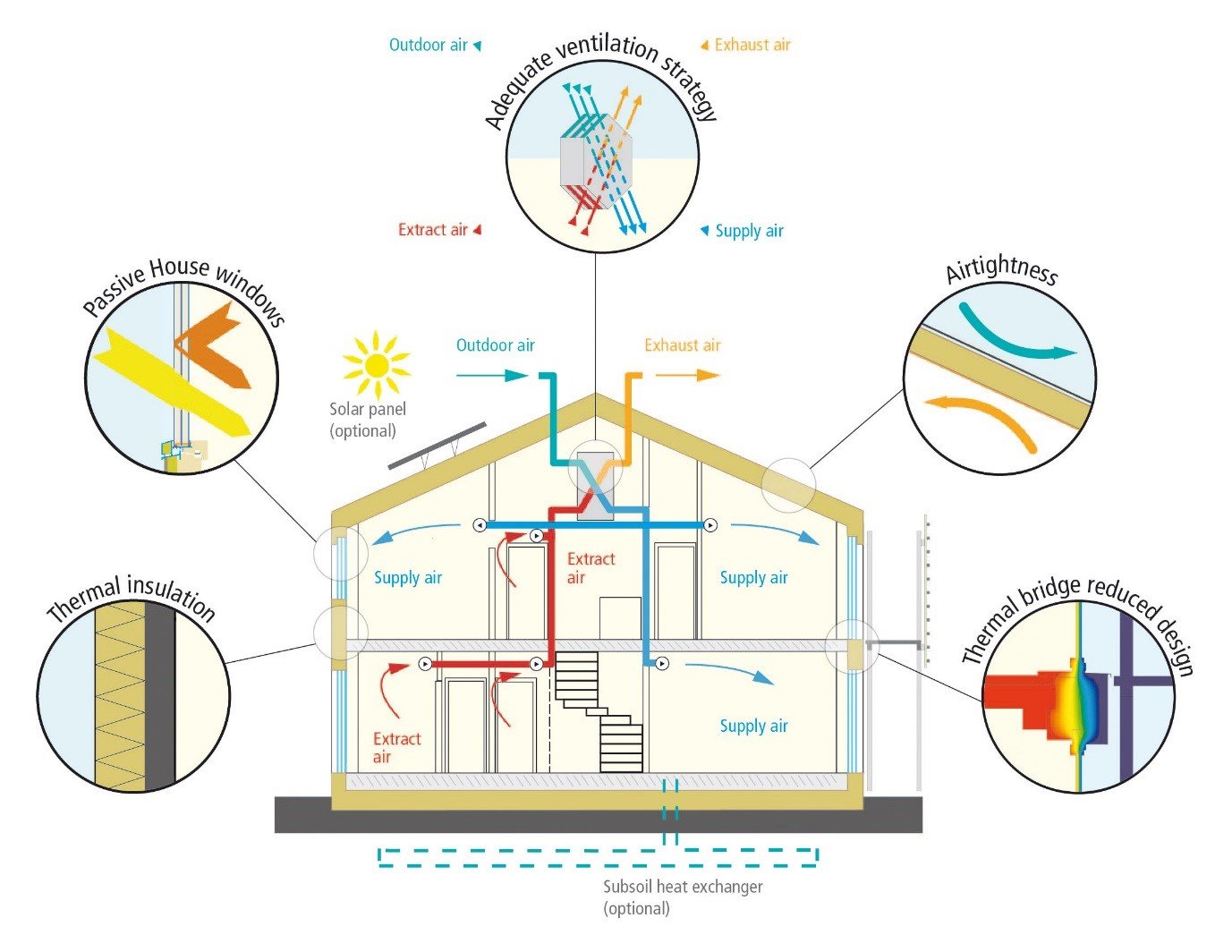What is a Passive House?
‘Passive House’ or ‘Passivhaus’ as it’s known in German, is a design standard that delivers healthy, comfortable and efficient buildings.
A Passive House is recognised as the world’s most energy-efficient and health-conscious voluntary building and design standard. These houses achieve exceptional thermal comfort with minimal heating and cooling requirements by utilizing high-performance, certified Passive House windows and doors, insulation, airtight construction, and mechanical ventilation with heat recovery to eliminate thermal bridging.
Developed in Germany in the 1990s, Passive Houses have recently gained popularity in Australia. Since 2019, the industry has experienced significant growth.
Contrary to earlier beliefs that Passive Houses are only suitable for colder climates, several buildings in Australia are now fully certified and classified as Passive Houses. They maintain a comfortable indoor temperature ranging between 20°C to 25°C year-round.
Are You Looking For High Performance Windows For Your Passive Style House in Australia?
How Does A Passive House Work?
The 5 Principles of a Passive House
The Passive House Standard is built on five key principles that work together to create a beautiful, quiet home free from dust, mold, and pathogens. These homes are cost-effective to run and significantly reduce your carbon footprint.
High-Performance Windows suitable for Passive Houses
Passive homes require high-performance double or triple-glazed windows with thermally broken or non-conductive frames like uPVC. This maximises energy efficiency and prevents excessive heating or cooling.High-Quality Insulation
Insulation acts like a blanket, reducing the transfer of heat and cold from outside. High-quality insulation is crucial in a Passive House to eliminate the risk of condensation.Airtightness
An airtight, well-insulated home effectively retains warmth or coolness, preventing air leaks and drafts.Eliminating Thermal Bridges
Thermal bridges are points in the home that conduct heat or cold more quickly than others. In a Passive House, these bridges must be eliminated by using non-conductive materials to separate conductive ones, breaking the thermal bridge.Mechanical Ventilation with Heat Recovery (HRV)
HRV systems work by removing stale air and supplying a constant flow of fresh, filtered air. The unit recovers heat or cooling that would otherwise be wasted, reducing pollutants and the risk of condensation, resulting in a healthier indoor environment.

